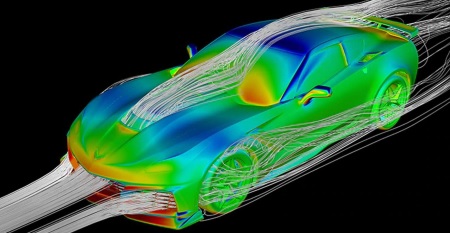Similar articles
From Pistons to Propulsion: How Technological Innovations Revolutionised Racing

Automotive racing has always been at the forefront of technological innovation. From the roaring engines of the early 20th century to the sophisticated machines we see today, advancements in technology have consistently reshaped the world of motorsport. Here, we delve into the transformative tech that has accelerated the evolution of racing.
Engine Evolutions
Engines, the heart of any racing car, have seen monumental shifts in their design and capabilities. Initially, the focus was on increasing size and power. However, as the decades passed, the emphasis shifted to efficiency, weight reduction, and fuel management.
Turbochargers
Introduced in the 1970s in Formula 1, turbochargers significantly increased engine power by forcing more air into the combustion chamber. Despite their early challenges, such as ‘turbo lag’, refinements over the years made them a mainstay in motorsport.
Hybrid Power Units
The 21st century saw a shift towards sustainability, with hybrid power units making their debut. These systems harness both traditional combustion engines and electric motors, enhancing efficiency while reducing emissions.
Enhancing Aerodynamics

As engineers understood the significance of air resistance, the exteriors of racing cars experienced significant innovations to maximise their aerodynamic efficiency.
Wings and Spoilers
Once a foreign concept, wings and spoilers became integral by the 1960s, helping cars maintain traction by pushing them downwards and improving cornering speeds.
Ground Effect Aerodynamics
Popularised in the late 1970s, this involved designing the car’s underside to create a low-pressure area, sucking the car closer to the ground, further improving grip and cornering capability.
Safety First
As racing speeds increased, so did the potential risks. Technological advancements played a pivotal role in enhancing driver safety.
Carbon-fibre Monocoques
Introduced in the 1980s, these structures not only reduced weight but also offered improved strength and crash protection compared to traditional materials.
Halo Protection System
Implemented in Formula 1 in 2018, the halo is a titanium structure above the driver’s head, designed to deflect debris and protect in case of an upside-down incident.
Advanced Electronics and Telemetry
The digital age ushered in a new era of racing, with cars becoming increasingly reliant on electronics for performance and strategy.
Semi-automatic Gearboxes
Making their way into racing in the late 1980s, these gearboxes allowed drivers to shift gears without taking their hands off the wheel, drastically reducing shift times and increasing precision.
On-board Telemetry

With sensors scattered across the car, teams could monitor every aspect of the vehicle in real-time, from tyre temperatures to fuel usage, allowing for more informed strategic decisions.
Into the Future
As the world moves towards automation and sustainability, motorsport remains a testing ground for emerging technologies. Whether it’s fully electric racing series like Formula E or autonomous racing challenges, the track continues to be a melting pot of innovation, promising an exhilarating future for fans and racers alike.



